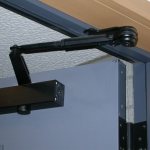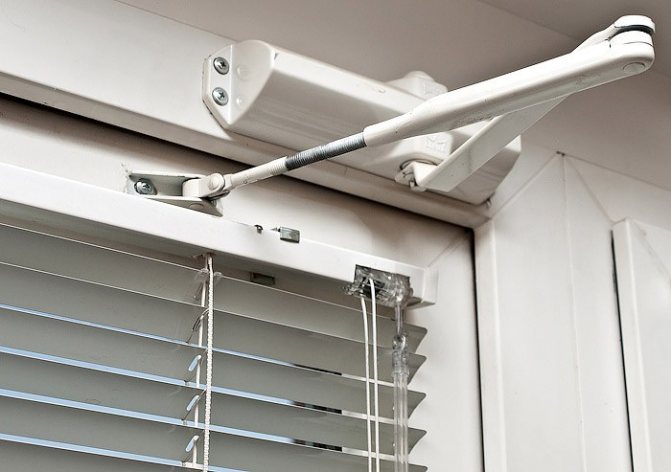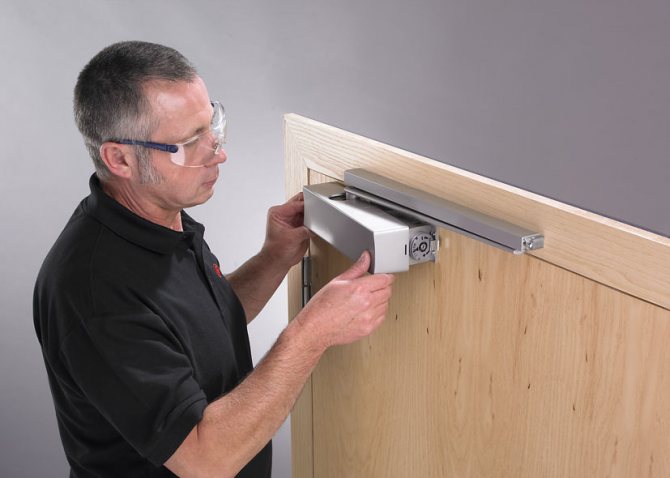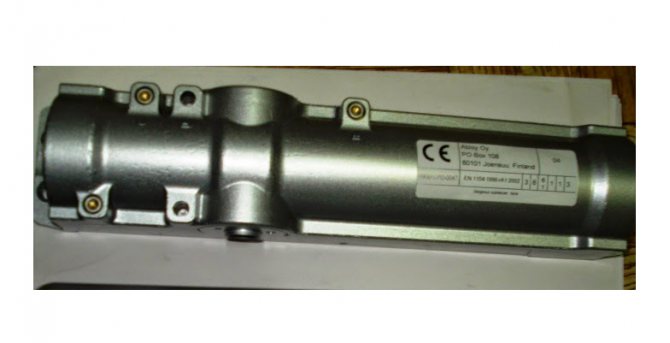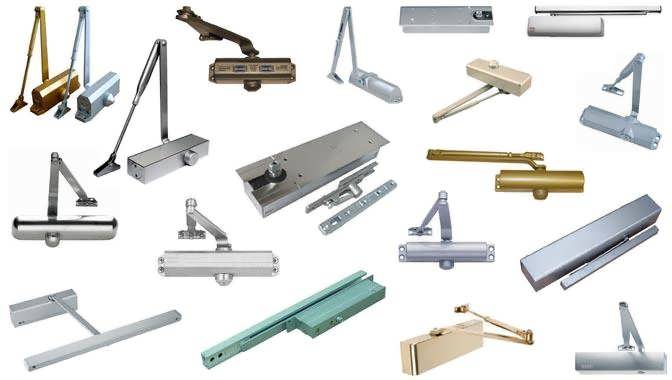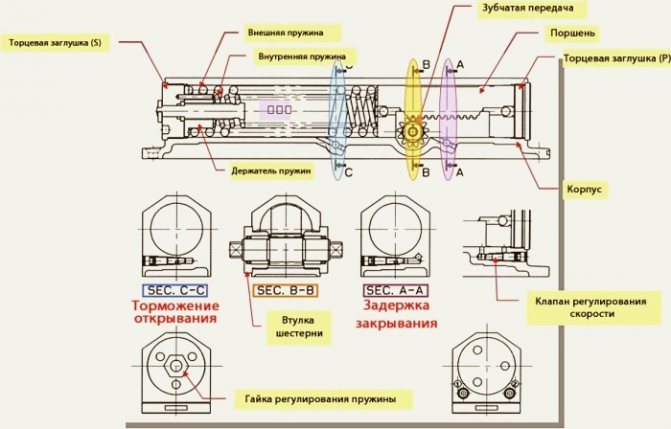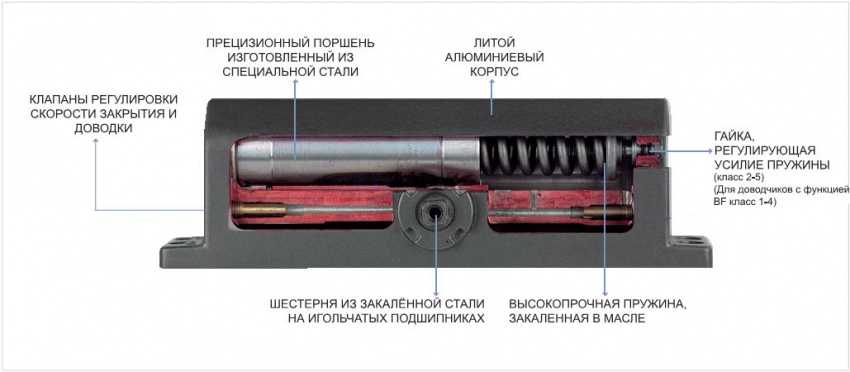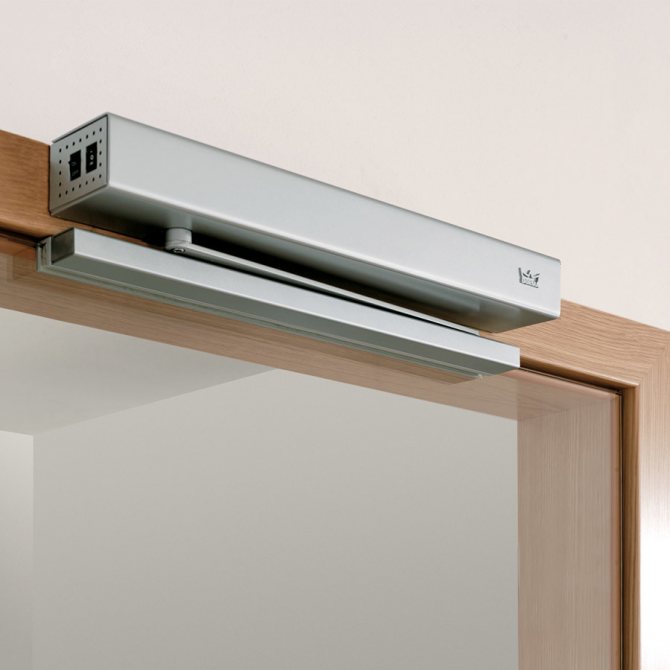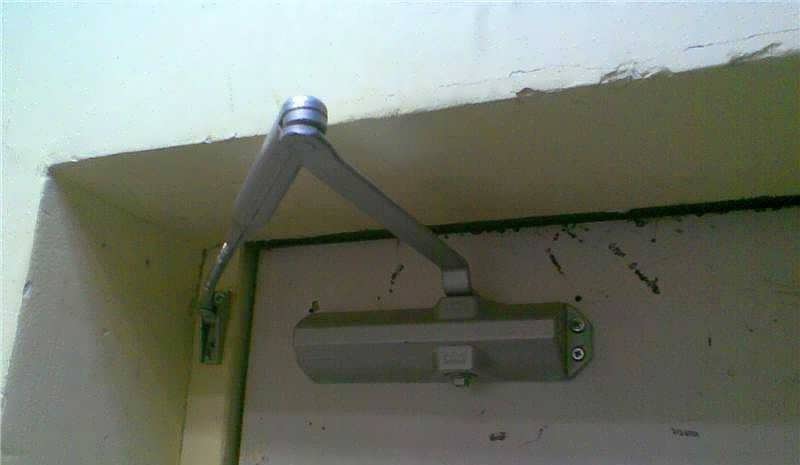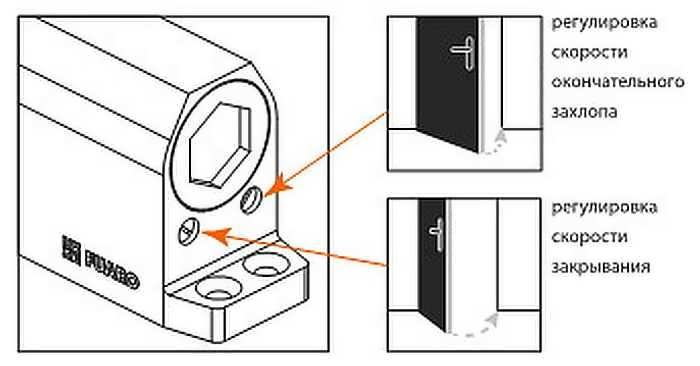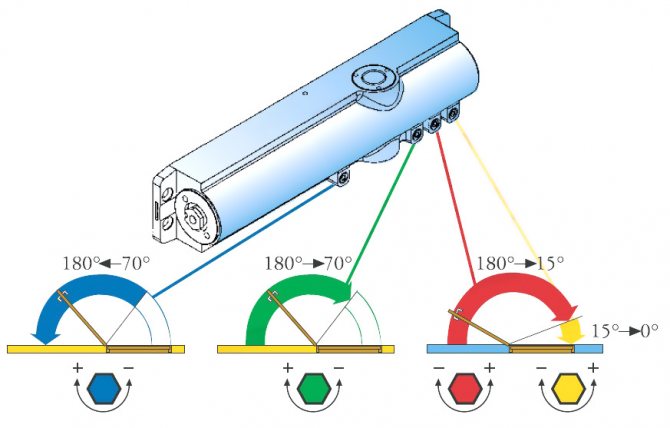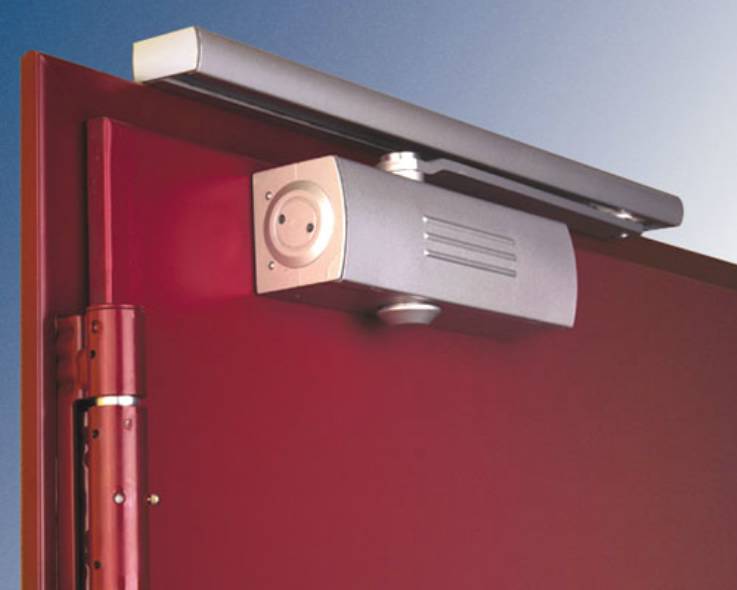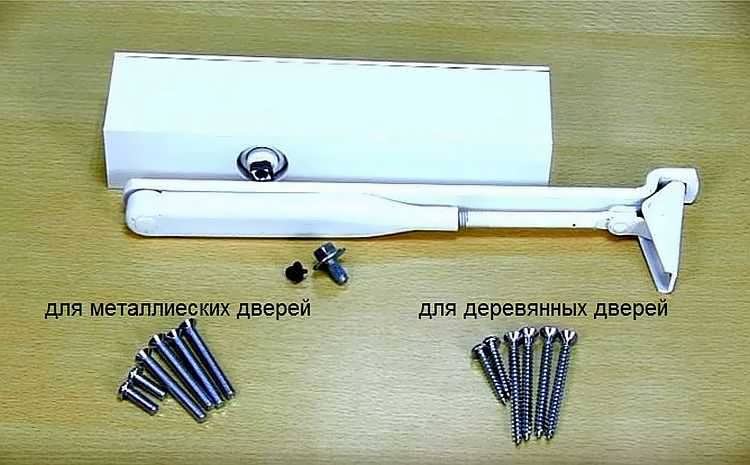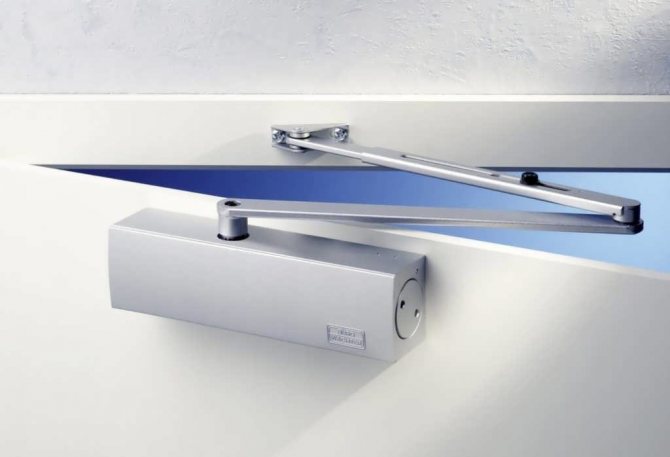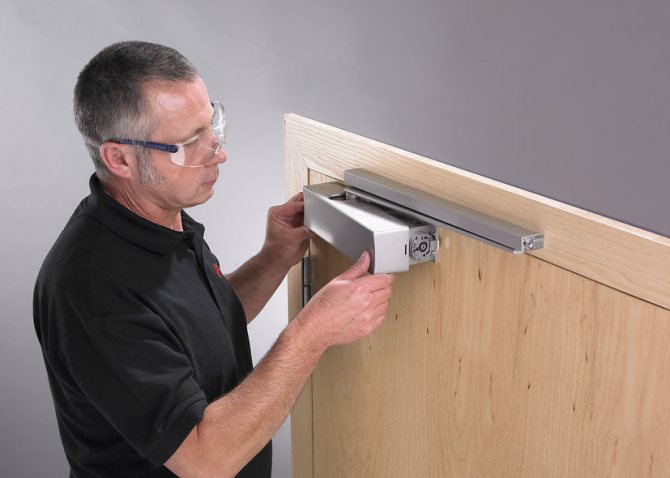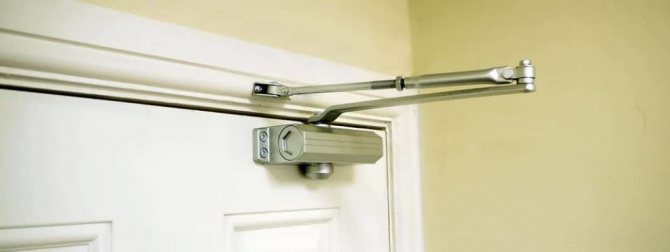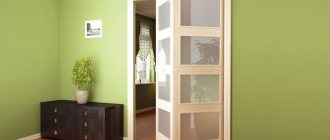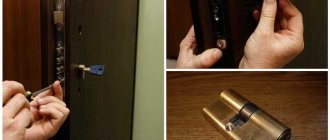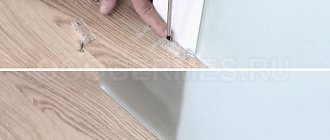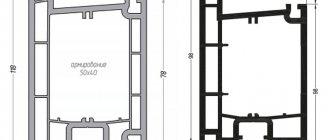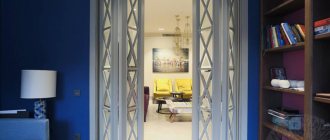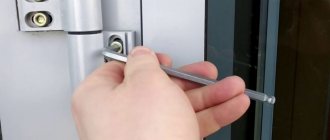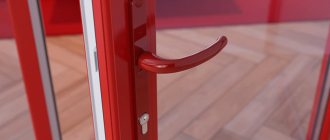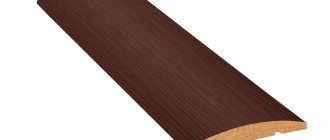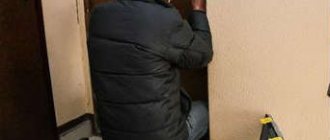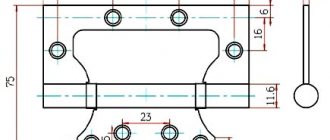Doors are a necessary attribute of any room - residential, industrial, cultural and entertainment or auxiliary. When it runs smoothly, it doesn't creak, it doesn't pop, it doesn't get noticed. But when the closing mechanism is faulty, it can cause a lot of inconvenience and trouble. A door closer is a convenient device that frees a person from a lot of trouble. The sash closes by itself, controlled by a simple adjustable design. Adjusting and installing a door closer are not complex technological processes that are available to almost everyone.
Types of closers
The task of the mechanisms is to provide smooth opening / closing of door leaves with adjustable effort and speed, to pause in the open position to facilitate passage for people with special needs. Such parameters of door functioning exclude knocks and breakdowns of mechanisms due to excessive mechanical forces. Energy is required to complete the assigned tasks, it is accumulated during the opening of the door leaf. We will consider in detail how the mechanism works a little below, but now we need to familiarize ourselves with their types.
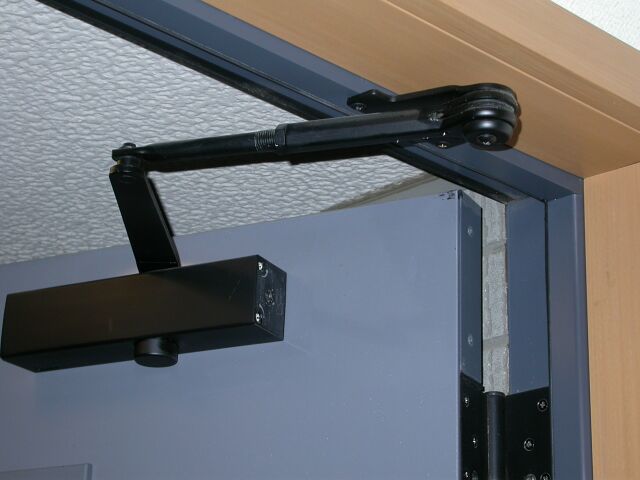
Door closer
Table. Types of door closers
| Closer type | Brief description and technical parameters |
|
|
Traditional and simplest model. When the door is opened, the metal lever compresses the spring, later it returns to its original state and closes the canvas. Spring closers are very reliable and cheap, but they have one unpleasant drawback - the doors slam hard. This not only annoys users, but also causes door locks to break. |
|
|
A more modern mechanism has a sliding (slide) metal rod along a special guide. It is used most often for lightweight interior doors. Heavy blades have a significant moment of inertia, which complicates the operation of the mechanism. |
|
|
A more reliable and most common option, a very reliable device. Universal purpose, has no restrictions on the weight and size of the doors. |
When buying any mechanisms, one must always keep in mind a simple dependence: the simpler the device, the more reliable it is. This is an axiom for all engineering structures, keep it in mind when making your final decision.
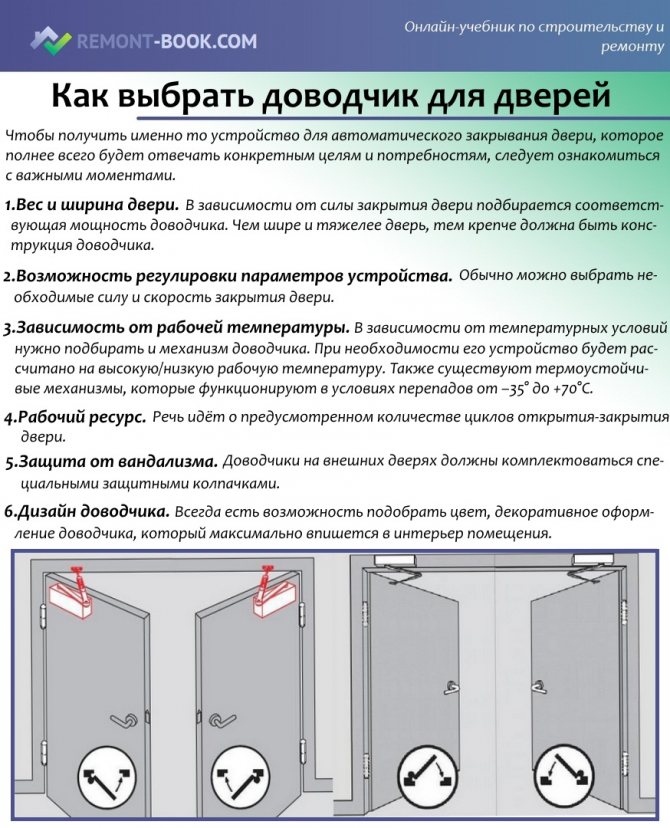

How to choose a door closer
Door closers prices
Closers for doors
How to adjust the door closer after installation
The function of the modern closing device is no different from the work of the former "antediluvian" springs, which were previously installed at the entrance to the front doors of residential buildings, organizations, and shops. Their big disadvantage was the sharp slamming of the sash with a loud knock. Such a rapid closing of the front door was inconvenient and rather dangerous, especially for children, who could easily pinch their hands. A modern door closer, its installation, adjustment, solve the problem of noise in the entrance, forcing the door structure to work in the prescribed mode.
The main working mechanism of any door closer is a spring-loaded hydraulic shock absorber. The oil circulates from one chamber to another thanks to a system of valves that set the movement of the leaf in different directions. The viscosity of the oil composition ensures smooth closing and opening of the door.
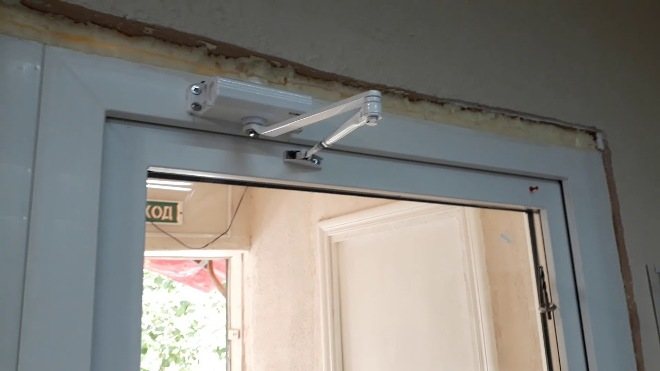

The closing device is installed indoors so that it cannot be removed from the outside. This protects the mechanism from dirt, dust, and also creates additional safety for residents. Installation instructions and tools are required:
- screwdriver;
- ruler;
- drill;
- a pencil for marking.
The fasteners are included in the kit, which the manufacturers supplement with installation templates, which show all the components of the mechanism in full size and the locations of the holes for fastening. Installation begins with fixing the body, which is then connected to the traction arm. All actions are detailed in the instructions, following which, the installation is carried out quickly and without problems.
The parameters of the device, as well as the methods of adjustment, depend on the type of the closing mechanism. There are two of them.
- Cam. The cam, as the main driving part, moves thanks to the rollers and presses on the spring that smoothly guides the web. The systems work well on lightweight doors.


- Serrated. The movement is due to a gear that transfers energy to the spring. The mechanism can be used for sash weights.

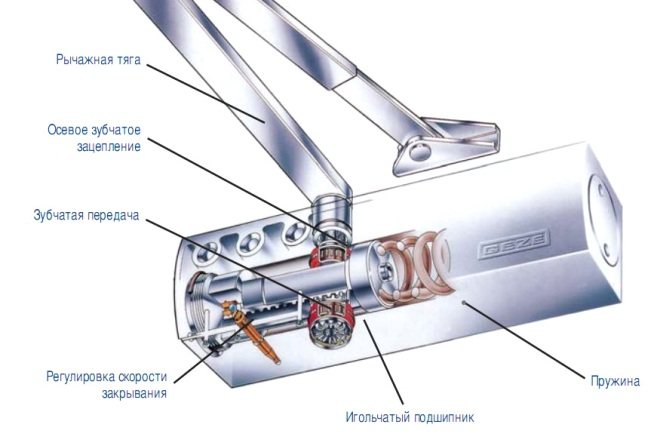
Depending on the place and method of installation, closers are classified into one of three types.
- Floor. The name speaks for itself, the system is regulated from below. The installation is carried out together with the installation of the door frame, planning in advance. The systems are used at the entrances to large buildings.

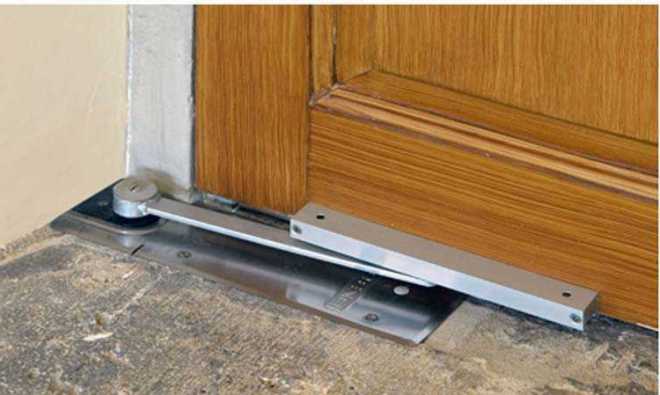
- Overhead. This is the most commonly used automatic closer. The device is installed from above, connecting the box and the canvas itself. Such mechanisms are always used for metal doors in residential buildings, since they are easy to handle and maintain.

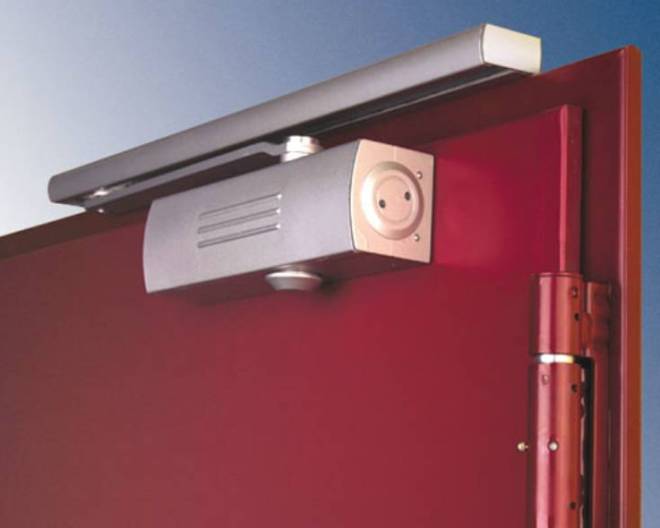
- Hidden. This type of mechanism is rare. It is mounted directly into door hinges or into the end of the door frame. Allows not to disturb the interior of the room, is expensive, has a high degree of security.

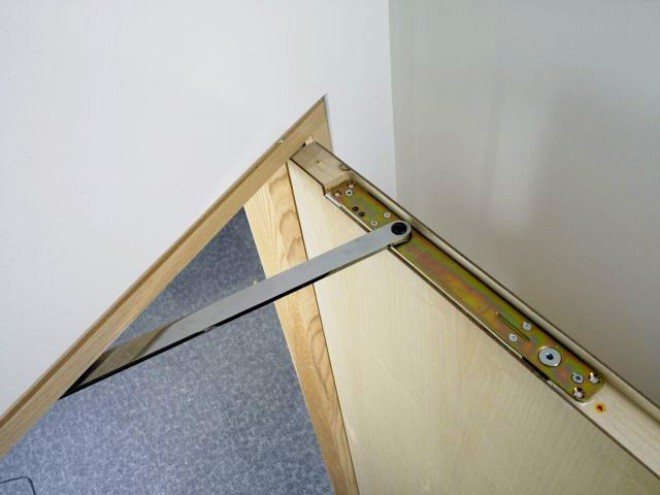
Choosing the speed of the door
After the installation is completed, it is necessary to adjust the closer so that the door speed is most convenient for operation. Each device is equipped with special screws for adjusting the course of the web. If it moves too fast, it will be enough to turn the screw clockwise 1/2 turn. If the movement is too slow, the screw is turned counterclockwise by the same half a turn.
Adjustment is carried out by trial until the speed is optimal. A high closing speed is good for limiting the entry of strangers, insects and cold air. But for interior doors or kitchen cabinet doors, slow movement is usually set. This adjustment technique applies to all types of closer. The essence of the process is that the more screws are screwed in, the slower the oil flows from one cavity to another, the slower the system works.
Install deadlop
When adjusting the closer, special attention should be paid to the adjustment of the latch. This is the speed at which the door passes the final path. When a high-speed latch is selected, it can slam with a violent crash, which destroys the box. Therefore, it is necessary to adjust the door closer so that the closing speed is low.
The latch adjustment is similar to the general speed adjustment with the difference that the latch speed is provided only on the last 15-25 cm of the trajectory of the outer edge of the door. The higher the speed is set, the stronger the impact force of the sash against the jamb will be. By choosing the speed of passage at the end of the travel path, it is optimal to set the average value when the closing is relatively fast, but without hitting the door frame.The clap is set by turning the screw number 2, which will adjust the movement of the blade in such a way that first the slowdown will work, and then it will completely adjoin the jamb.
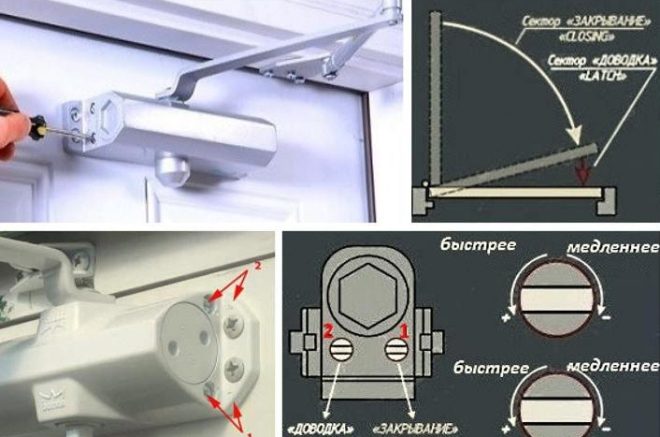

Calibrate the open position
In some cases, it is required that the doors are kept open, for example, when furniture is being transported, or when parents call a doctor to the child, but there is no intercom. Adjustment in the "open door" system of door closers is simple and easy.
Many models of top-mounted systems have a "hold open" option. To set the mode, you need to set the door at 90 ° and fix a special latch that will keep the door open as long as needed. If you open the sash to a different degree, the system will work without holding. When the need for open doors disappears, you need to pull the sash towards you, and the setting will be removed automatically.
Consequences of improper use
Despite the fact that high-quality devices have rather high strength indicators, they also sometimes experience premature failure.
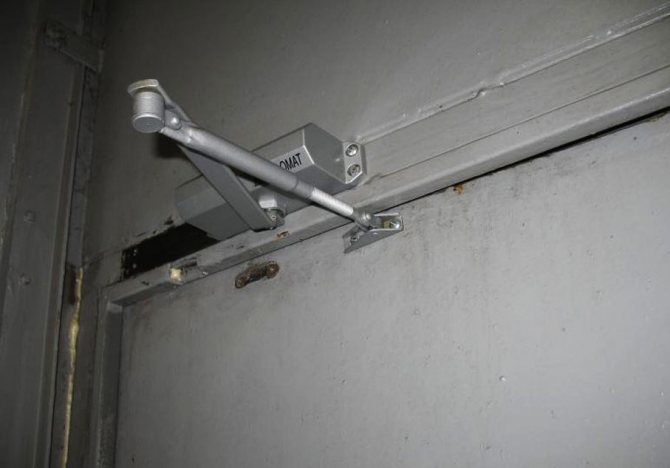

If used improperly, even high-quality door closers fail.
- Mechanical breakdowns of the closer: deformation of the rods, violations of the functionality of the piston. Such breakdowns appear as a result of improper door operation and excessive physical effort on the canvases.
- There are situations when the mechanisms use oil that is not intended for operation at subzero temperatures. It sharply increases the viscosity, the doors are difficult to open / close, and great physical effort is required.
- Sealing failure and oil leaked. The oil seals cannot withstand the pressure and burst. When using the doors, oil gradually leaks, and air takes its place. In addition to deteriorating the appearance of the doors, the door closer is disrupted.
- Installation of a rigid door closer on plastic doors. These structures cannot withstand significant efforts, the elements of the door frame loosen over time, the body of the mechanism falls with all extremely negative consequences.
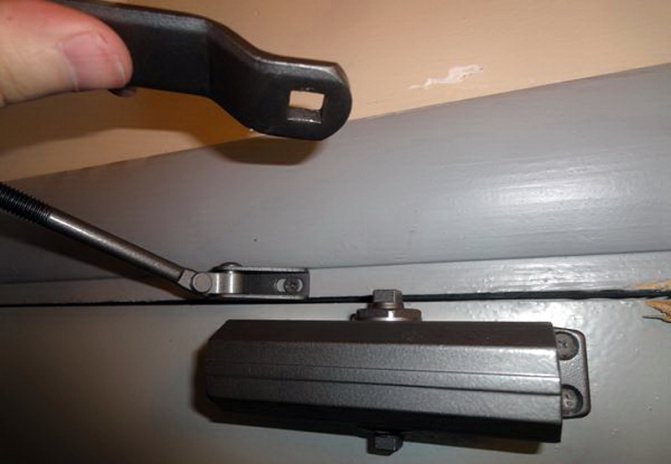

The door closer type must match the door design
Once again, we remind you that the duration of using the closer depends largely on consumers. If they follow all the manufacturer's recommendations, then no unexpected problems arise.
Entrance door prices
Entrance doors
Adjusting the door closer during operation
Correctly mounted and adjusted device guarantees flawless operation for a long time. However, the oil inside the mechanism reacts differently to changing weather conditions, which means that the spring will be compressed in different ways. The characteristics of the system change after cold weather and manifest themselves differently in the summer heat. These are standard indicators, and adjusting the door closer is possible with your own hands without calling a specialist. The main thing is to do it on time and take into account some of the nuances:
- study in detail the instructions for the closer, precisely following each described step;
- turn screw no. 1 counterclockwise 1/2 turn to adjust the overhang;
- screw # 2, turned ¼ turn clockwise, determines the opening speed;
- screw no. 3 (lateral) determines the force of movement of the sash.
Reasons for adjustment
Any mechanism, as a result of long-term operation, loses its original characteristics. So the closer, deviating from the settings, can close the sash very slowly or with a crash. Repair of the closer, carried out on time, and adjustment of its mechanism will help to avoid more serious problems in the future. The reasons for correcting the device operation may be the following events.
- A preventive check of the operation of the entire system must be carried out 1-2 times a year.
- On the eve of low winter or high summer temperatures, prevention is required. When the temperature drops or rises, the filler oil changes its properties, and the movement of the canvas in winter slows down. In the summer heat, the filler composition, on the contrary, liquefies and causes acceleration and impacts of the sash against the box. Problems can be avoided by timely adjustment of the mechanism.
- In the event of malfunctions, adjustment of the mechanism is especially needed. If faults are noticed, you should inspect and repair the damage.
Tips: how to loosen a door closer
When the installed settings are not pleasant to users, the operation of the device is corrected additionally. You can adjust the closer with screws. If the door moves slowly and you need to make a lot of effort, the screws should be loosened, and the door leaf will work easily and softly. Loosening the screw completely allows the blade to be kept open when needed.
Causes of breakdowns
High-quality repair of the door closer is possible only if the reasons for the formation of defects and damage are correctly identified.
The reasons for breakdowns can be as follows:
- adverse, cold weather conditions;
- abrupt opening and closing of doors;
- blocking the movement of the door leaf;
- overload of the closer.
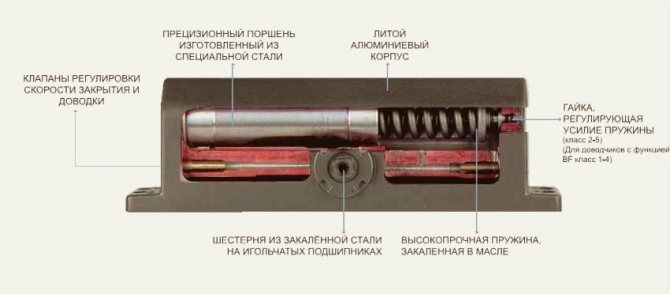

Factors determining whether repair is possible
Manufacturers are not interested in affordable door repairs. Most of them have an all-alloy body. For such models, it is difficult to carry out repair work. Damage such as worn oil seals or oil leaks cannot be repaired. Therefore, the closer must be dismantled and replaced.
Correct adjustment of the door device immediately after its installation is of paramount importance in the reliable and efficient operation of the mechanism.
What exactly can be adjusted
The special "settings" of the closer mean the adjustment of its three functions:
- Door closing speed. It is important, since strangers may have time to enter the house after the tenant. It is important that the door closes at intervals of 5-7 seconds per person walking. In addition, when the sash is slowly closing, it gets cold or insects fly into the entrance, stray animals run.
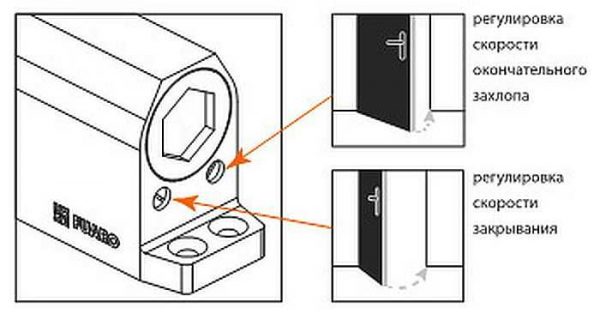

- Intermediate web path. This refers to the rate at which the sash is attracted to the magnet. That is, the interval of movement of the web after full opening. By adjusting this parameter, it is possible to ensure a permanent opening of the sash.
- Dohlop. That is, direct contact of the door with a loot or magnet. It is undesirable for a door with a door closer to hit the frame with all its might. This is uncomfortable for the user and harmful to the cashing machine / magnet.
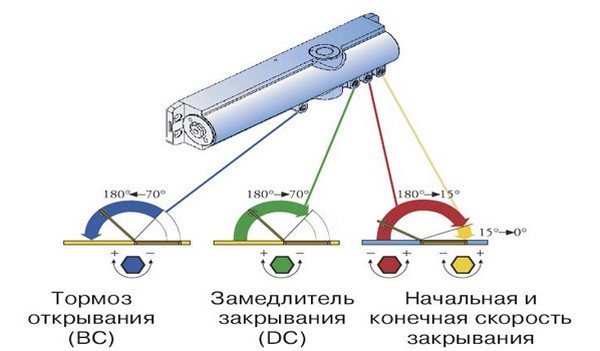

Interesting: Adjusting plastic windows with your own hands
Features of some models
The most common door closers among users are “Dorma” TS-68, “Diplomat”, “GEZE” TS 4000. Each model has its own peculiarities of regulation of such devices.
The Dorma TS-68 is a classic top-mount model. Its peculiarity lies in the fact that the mechanism is equipped with a special lever for changing the force of door locking.
The "Diplomat" model is characterized by simple installation and maintenance of the mechanism. Adjusting the door closer includes the steps of tensioning the spring and adjusting the opening-closing. In some modifications of the "Diplomat" there is no deadlock setting. The devices work on the principle of hydromechanics.
The GEZE TS 4000 is a popular top door mechanism among users. The door closer can adjust the opening damping, adjust the thermostable closing speed at the front and the final swing by means of the link arm.
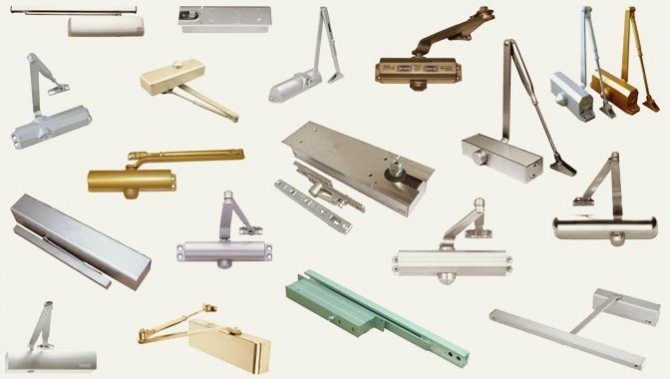

Latch adjustment
Adjusting the door closer for installing the latch ensures that the leaf adheres to the frame, allows you to leave a small gap before slamming, i.e. does not completely close the door structure.By adjusting, you can adjust the slow closing of the block, reducing the force of the clap.


Using screw # 2, you can adjust the speed with which the structure will slam shut. When 10-15 ° remains before the door leaf closes, the deceleration will work.
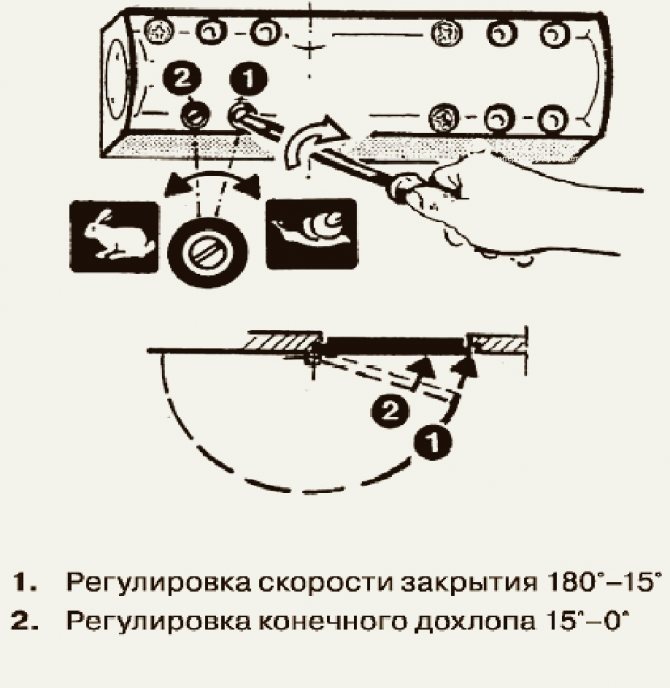

What if nothing works?
It happens that the door closer is adjusted with good information preparation, the instructions are at hand, but still the result cannot be achieved.
The range of modern door closers is very diverse.
In this case, it is the wrong choice of this part, especially for heavy metal staircase doors. Most likely, the index of the European standard does not coincide with the weight or width of the door, the angle for fastening is incorrectly attached, or the holes for the self-tapping screws on which the closer is held are displaced.
In this case, the question of how to adjust the closer is not correct, since you need to change the intercom doors, or, more likely, remove the closer and insert a new, more powerful one. You should also pay attention to the lever, it must be perpendicular to the plane of the door. If it is misaligned, one of the closer links may need to be moved. When purchasing door closers, know that adjustment is easy, especially if the instructions are not lost.
Self-configuration of the device
The mechanism in question has only a few settings that can be changed. Recommendations for carrying out such work are as follows:
- The closer can be installed on the entrance and interior doors. High speed is chosen for the outer door, as this will eliminate the ingress of large amounts of cold air and insects. Interroom are set to slow speed. When choosing a speed, seasonality and personal preference are determined.
- If a large number of people constantly enter the room, then you need to focus on the function of the intermediate stroke. Due to this, more people will be able to pass through one period of opening the door. A special screw is used for permanent opening.
- When self-adjusting, many forget about the latching function. It provides a lock actuation or a high degree of sealing of the doorway.
The adjustment of the mechanism should be carried out exclusively taking into account the manufacturer's recommendations, which are indicated in the operating instructions.
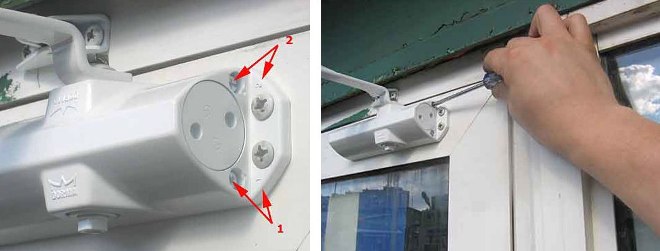

The main stages of adjustment
Experts recommend carrying out the procedure in question periodically. It is divided into several stages:
- The protective cover is opened. It can be attached in various ways, often with plugs. You need to be careful as you can damage the surface.
- There is a control valve, which is located under the protective cover.
- For quick closure, turn clockwise, for slow closure counterclockwise. It is not recommended to make more than two turns from the zero position, as this will lead to a lubricant leak.
- In order for the web to be in the open position for some time, it is retracted by 90 degrees, after which the position of the additional lock changes.
After the adjustment, the correct operation of the device is checked.
What cannot be done?
Some errors can lead to a decrease in the functionality of the door closer. Do not allow the following:
- Too many turns of the adjusting screw around the zero point will damage the mechanism and leak lubricant.
- The skew of the structure is not allowed, as this leads to a quick failure of the moving element.
- At the time of closing the web, it is forbidden to apply great force.
- It is not recommended to fix the canvas in a half-open state with third-party materials, since a special clamp must be used for this.
- Do not hang heavy objects on the door. This can cause the closer position to change.
The above recommendations exclude the possibility of reducing the operational life of the installed mechanism.
Restrictions on closer adjustment
In order for the device to work stably and easily be adjusted, certain restrictions must be observed during its operation.
- When adjusting the mechanism, the screws must not be turned from their original position more than 2 turns. If the rule is not followed, oil will leak out, which will have a bad effect on the functionality of the structure, and repairing a door closer at home is quite difficult.
- During installation, you must carefully monitor that the structure does not warp, otherwise breakdowns are inevitable.
- It is unacceptable to support an open door with various objects. There is a special option for this.
- Loading the canvas with heavy objects is prohibited, since the diagonal will skew from the additional weight.
If you take into account these simple restrictions and adjust the device in a timely manner, it will be possible to use all the conveniences of the closer for a long time.
Selecting the door speed
A closer can have several functions. Almost every action can be corrected in a simple way. The first important point is adjusting the speed of the front door closer. In other words, it depends on how quickly the door will open and close. Standard overhead models have two screws on their case, the first screw is just responsible for adjusting the speed, but it can be turned a limited number of times.
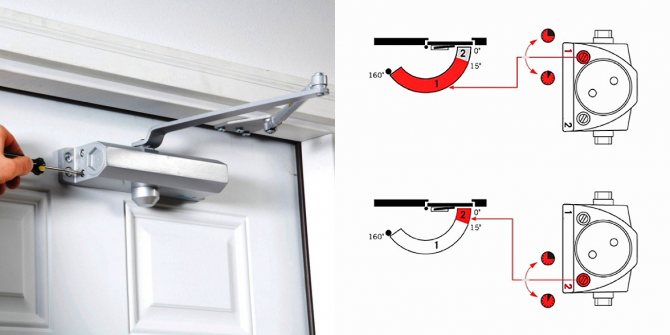

Closer speed is adjusted using two adjusting screws: 1 - blade speed, 2 - closing speed
By adjusting the spring tension level, you can either loosen or harden the door closer. Depending on the direction of scrolling, you can tighten or release it, which will provide more free movement of the canvas.
Please note that one turn of the screw is enough for adjustment, you cannot turn the screw two times, otherwise the device may depressurize and oil will leak out.
Preventive measures
It is necessary to periodically check the door structure for various damages and malfunctions:
- The door is examined for defects that can lead to distortion. Also check the fastening of the hinges.
- Inspect the body of the mechanism - its integrity, the absence of cracks and leaks.
- Check the places of fixation of the closer to the box and the canvas. Loose fasteners should be tightened.
- The linkage must work without interruption.
- If necessary, adjust the speed, opening and closing angle of the web.
If serious damage to the closer is found, then the mechanism is removed from the door and repaired or replaced.
Support of NORA-M specialists
The above recommendations should not be taken as a guide to immediate action. Moving the door closer to another place is not difficult, but making extra holes in the canvas without firm confidence is still not worth it. To correctly assess the situation with the installation of the NORA-M door closer, you can contact us.
Technical specialists of the NORA-M trademark are always in touch! For consultation, you can provide a photo of the installed door closer, so that it would be easier for a specialist to identify the problem and ways to solve it.
In order to get advice, you can use a special form "Technical support" on our website (the corresponding button is located in the upper right corner of any page of the site), or call by phone.
